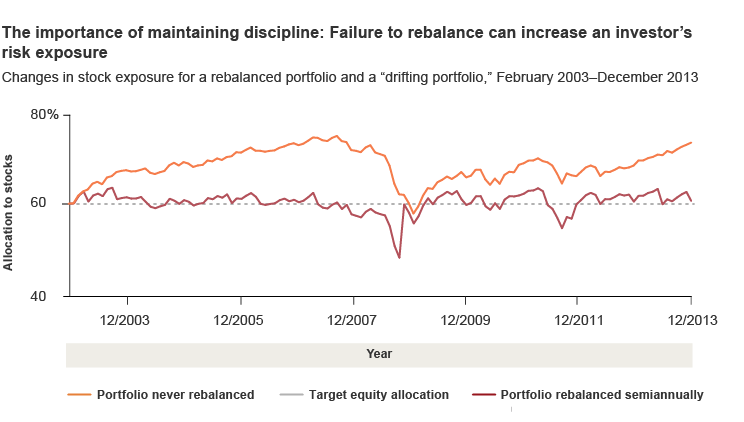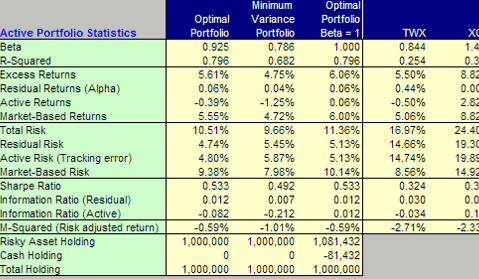Portfolio Allocation Combining Equities Corporate Bonds And Leverage To Maximize RiskAdjusted
Post on: 3 Апрель, 2015 No Comment

Summary
- Frequently investors and advisors use the portfolio split between bonds and equities as the primary means of varying portfolio risk.
- A more efficient outcome may be achieved by leveraging the portfolio (depending on the investor’s borrowing cost) or reducing the long run allocation to cash.
- For portfolios with 100% corporate bond allocations, a higher return and lower volatility may be achieved by making a small (10-20%) allocation to equities.
The last five years have seen a bull market in both US equities and corporate bonds. Over that period, the compound annual total return (capital growth plus dividends) from the S&P 500 was 16.25% with volatility of 15.92%. For investment grade corporate bonds, the return was 6.25% with volatility of 4.56%.
Because of the way bond returns correlate with equity returns, the lowest risk allocation was not 100% to bonds (as the above might at first glance suggest), but 15% to equity and 85% to bonds. That portfolio had a volatility of 3.62%, 20% less volatility than the 100% bond portfolio. The equity weighting allowed a higher return, at 7.93%, 26% more than the 100% bond portfolio.
The portfolio having the highest return per unit of volatility had an allocation of 20% to equity and 80% to bonds. Return/volatility for that portfolio was 2.27 times, compared to 1.02 times (100% equities) and 1.37 times (100% bonds).
The possibility of leverage adds further potential to improve the return/risk tradeoff, subject to the borrowing cost.

If we can assume an institutional investor with access to funds at around the investment grade corporate bond rate, we have a borrowing rate of 6.25% for the five-year period. (This is also probably not too far away from the cost of borrowing against equity in real estate over that period).
At 6.25% borrowing cost, it would have paid to lever the portfolio with some debt, rather than increase the allocation to equities, if you wanted to take more risk. At 70/30 equities/bonds without leverage, the return would have been 13.54% with 10.65% volatility. If you were happy to accept 10.65% volatility, you could have achieved a return on your equity in a leveraged portfolio of 13.91%, or 37 basis points higher than without leverage and with the same risk. The portfolio would have had 42% equities, 58% bonds and leverage (borrowings to total capital) of 43%.
This analysis is pre-investor taxes so does not take account of individual tax rates on dividends, interest income and capital gains or tax deductibility of borrowing costs.
Asset allocation today
Given the strong upswing in US equity markets over the last five years, we should look to long run returns, to which returns over the coming years could be considered likely to revert, when framing allocation and leverage strategy going forward from today. The real return to US equities has been around 6% over the last 100 years — we would add 2% inflation to give an estimated nominal return of 8.15%.
For bonds, we are inclined to use the current 20-year A-rated bond rate of 3.77% as an estimate of the long run corporate bond return going forward.
For borrowing costs, we have 3.8%, being the A-rated 20-year borrowing rate and also the 20-year mortgage fixed rate.
We have used the volatilities and correlations found in the last five-year analysis period.
The left hand panel in the table below shows the portfolio returns and volatilities of a range of allocations between 0% equities and 100% equities. The right hand panel (under Optimized) shows the returns when the allocations to equities, bonds and leverage are optimized so as to give the highest return for the volatilities shown in the left hand panel.














